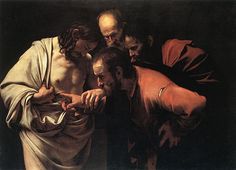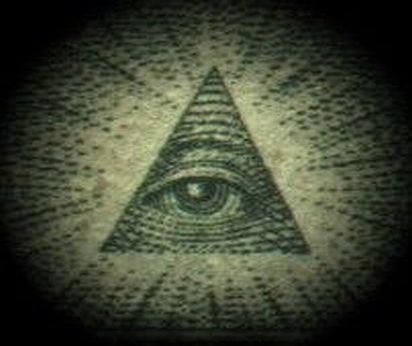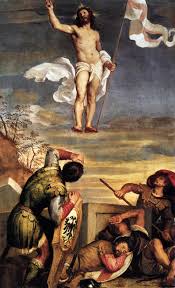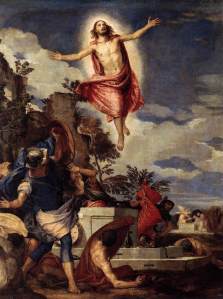Easter is just around the corner, and we Believers need to be prepared to defend the truth that Jesus of Nazareth rose from the dead. Otherwise, what are we celebrating?
If Christ has not been raised, your faith is futile and you are still in your sins. – 1 Corinthians 15:17, ESV
One of the strongest arguments for the resurrection of Jesus from the dead is the minimal facts argument, pioneered by Gary Habermas. Dr. Habermas gathered and reviewed over 1,400 scholarly works on the resurrection event written from 1975 to 2003. The authors of these works ranged from Fundamentalists to Liberals, but they all agreed on about a dozen historical facts that they considered to be accurate. For the sake of brevity, I will focus on the four facts typically used by William Lane Craig.
1. Jesus died at the hands of Roman soldiers on the cross and was buried.
2. Early on the Sunday morning following the crucifixion, a group of Jesus’ women followers found the tomb empty.
3. Individuals, and sometimes groups of people, believed they had encounters with a risen Jesus.
4. Jesus’ followers believed and proclaimed His resurrection from the dead despite their having every predisposition to the contrary.
The evidence that Jesus died and was buried is solid. The burial itself is confirmed by multiple independent sources, such as 1 Corinthians 15 and the four Gospels. We are so used to thinking of the Bible as a single book that we forget that it is really a library of separate works written by different people, although all inspired by the same Spirit. Even though the Gospels differ on some details (which can be reconciled), if compared they do not differ until after the burial of Jesus.
The empty tomb is also confirmed by multiple independent sources. Most notably, the empty tomb was discovered by a group of women. At the time, a woman’s testimony was not taken seriously and according to the Jewish historian Josephus not even admissible in court. If early Christians had made the resurrection accounts up they would have had men discover the empty tomb first. Instead, they admit that women went to Jesus’ tomb while the men were hiding in fear from the authorities! An empty tomb is also very problematic for alternative explanations of what happened. Some skeptics try to claim that the appearances of the risen Jesus were only hallucinations, or that the women went to the wrong tomb that Sunday morning. If this was the case, the authorities would have refuted the claims that Jesus had risen from the dead by publicly displaying his rotting carcass.
The New Testament states that Jesus was seen by different individuals, and sometimes large groups, at various times and places. According to 1 Corinthians 15:6, “He appeared to more than five hundred brothers at one time, most of whom are still alive,” at the time Paul wrote the letter. Once again, we cannot believe that this was a hallucination or a dream. There is no such thing as a group hallucination! Even if the early followers of Jesus were all on an acid trip and claimed to see Jesus under the influence, each account would have been radically different. Instead, we have multiple independent testimonies that confirm and compliment one another.
It is also compelling evidence for the resurrection that some of the people who saw him were previously hardened skeptics. During His earthly ministry, Jesus’ family thought he was crazy (Mark 3:21), but later He appeared to His brother James (1 Corinthians 15:7) who went on to become an apostle (Galatians 1:19) and a prominent leader in the church at Jerusalem (Acts 15, 21). Jesus appeared to Saul (also known as Paul) on the road to Damascus. He had just supervised the execution of Stephen and was on a mission from the High Priest to arrest Christians and bring them by force to Jerusalem. Before he encountered Jesus, Saul was, “breathing threats and murder against the disciples of the Lord” (Acts 9:1), but days after the encounter, “he proclaimed Jesus in the synagogues, saying, ‘He is the Son of God'” (Acts 9:20).
The truth is that even Jesus’ closest followers were skeptics. When the women returned from the empty tomb and told the men what they had seen and heard, it only “seemed to them an idle tale, and they did not believe them” (Luke 24:11). When Jesus appeared to two of His followers in disguise on the road to Emmaus, He rebuked them for their unbelief and explained to them that the Messiah must suffer before entering into His glory. When Jesus appeared to the apostles in Galilee, even in His presence (this time not in disguise), some doubted (Matthew 28:17). Thomas famously said he would not believe unless he touched Jesus’ nail scarred hands, and felt the hole in His side. However, perhaps we ought to refer to him as “Believing Thomas,” instead of “Doubting Thomas,” because after Jesus appeared to him he exclaimed, “My Lord and my God!” (John 20:28).

Jesus answered Thomas, “Have you believed because you have seen me? Blessed are those who have not seen and yet have believed.” This is often interpreted as Jesus telling Thomas he should have believed without evidence, but this is not the case. If Jesus or His followers were against evidence, John would not have concluded his gospel with these worlds:
Now Jesus did many other signs in the presence of the disciples, which are not written in this book; but these are written so that you may believe that Jesus is the Christ, the Son of God, and that by believing you may have life in his name. – John 20:30-31, ESV (emphasis mine)
Thomas had the eyewitness testimonial evidence of his fellow apostles and others who had seen the Lord. We also have their testimonies today in the New Testament.




